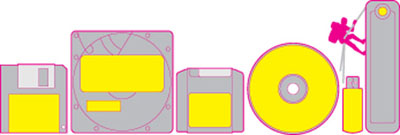I was just having fun with sound at first. One day I joined two scraps of sound together and they sounded interesting. I began collecting scraps of sound from the wastage…. It was initially a sound experiment – purely for the loving of placing one sound after another.
–Arthur Lipsett on ’very nice, very nice’
The soundtracks of some of the films of the legendary Canadian filmmaker Arthur Lipsett have just been remastered and released on Vinyl. Although Lipsett (who committed suicide in 1986) has been categorised as a “found foutage” filmmaker, the vision of his work is pretty much based on the juxtaposition of (found) sound and image (”I cannot tell whether I am seeing or hearing – I feel taste, and smell sound – it’s all one – I myself am the tone.”, he wrote). In his collages, in which he evokes his “complex, tragic-comic view of the world” (William C. Wees), sound becomes a subversive agent of the image, allowing a critical reflection on what is being shown. This juxtapostion creates after-images which carry over as sonic bridges to other sequences.
The importance of the sound, as instructions for observing and critiquing the images, is highlighted by this LP, which illustrates Lipsett’s highly structured system of field recordings, loops, speech and music. It proves all the more that Lipsett was really a postmodern bricoleur avant la lettre, rearranging the debris of the cultural past. (fragments are available here. The LP is published by Global A, the label owned by archivist Johannes Auvinen, better known – for those into Acid/House – as Tin man)
At the moment we’re composing some programs for the upcoming Courtisane festival in Ghent, which will probably feature some of Lipsett’s work.
Michael Baker wrote a nice piece on the sound-image relationship in Lipsett’s film ‘Very, very nice’. btw: If the video posted here (21-87) rings a bell: it was referenced several time in George Lucas’ ‘Star Wars’ films (also in ‘THX 1138:4EB’ and ‘THX 1138′). (For freaks only: Princess Leia’s cell aboard the Death Star is number 2187. THX 1138 took place in the year 2187, and Maggie McOmie’s character in it dies on the coded date “21/87.” Also, as the legend goes, one of the sound samples in Lipsett’s film, a conversation between Warren S. McCulloch, a pioneer of artificial intelligence, and Roman Kroitor, a cinematographer and director who helped develop the IMAX film format (”Many people feel that in the contemplation of nature and in communication with other living things, they become aware of some kind of force, or something, behind this apparent mask which we see in front of us…”) helped shape Lucas’ ideas about ‘The Force’. How about that, huh). Stanley Kubrick was also a big fan, and asked him to make the trailer of ‘Dr. Strangelove’. Lipsett declined, but his influence is clearly visible in Pablo Ferro’s brilliant trailer:
